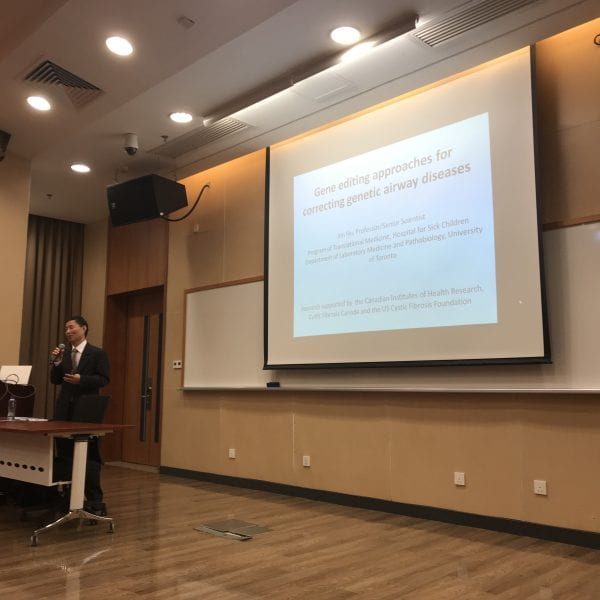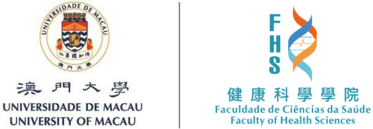
| Talk title | Gene Editing Approaches for Correcting Genetic Airway Diseases |
| Speaker | Prof. Jim Hu Professor and Senior Scientist Departments of Laboratory Medicine and Pathobiology, and Pediatrics University of Toroto Hospital for Sick Children, Toronto |
| Date & Time | 15 Nov 2019 (Fri) 10:00-11:00 |
| Venue | Room G004, E12 Building (University of Macau) |
| Abstract | Genetic airway diseases, such as cystic fibrosis (CF) lung disorder, are attractive targets for gene therapy because airways are accessible to gene delivery. However, more than two decades of CF lung gene therapy research demonstrated only challenges to its clinical applications, including physical and immune barriers to gene delivery, and the lack of sustained therapeutic gene expression. The additional problem for CF gene therapy is the large size of the transgene that requires a vector with a large DNA delivery capacity. We and others have made progress in developing novel vectors and delivery methods to achieve efficient gene delivery to airways of small and large animal models. Because lung airway cells turn over, therapeutic genes have to be integrated site-specifically, in order to achieve sustained therapeutic gene expression. Recent advancements in engineering gene editing tools, such as TALENs and CRISPR-Cas9 systems provide solutions to achieve site-specific gene integration. Prof. HU’s group has recently demonstrated that these gene editing tools can be delivered to cultured cells together with donor DNA (a therapeutic gene) using a single helper-dependent adenoviral (HD-Ad) vector. HD-Ad vectors are derived from adenovirus, but with all viral coding sequences removed. Thus, HD-Ad vectors have a large DNA carrying capacity (up to 37 kb) with improved safety. Using CF lung disease as a model, Prof. HU’s team have demonstrated that both TALENs and CRISPR-Cas9 gene editing tools can be used for effective gene correction in cultured mutant cells, indicating the potential of these tools to be used in vivo for permanent gene correction in organs or tissues where target cells turn over, such as in lung airways. Because genes encoding TALENs or CRISPR-Cas9 system and the donor DNA are carried in the same vector, following donor DNA integration, the vector genome integrity is compromised, leading to elimination of TALEN or CRISPR Cas9 expression. Thus, Prof. HU’s group show the feasibility of site-specific gene-targeting without undesirable expression of the gene editing tools, providing a safer way for site-specific gene correction. |

